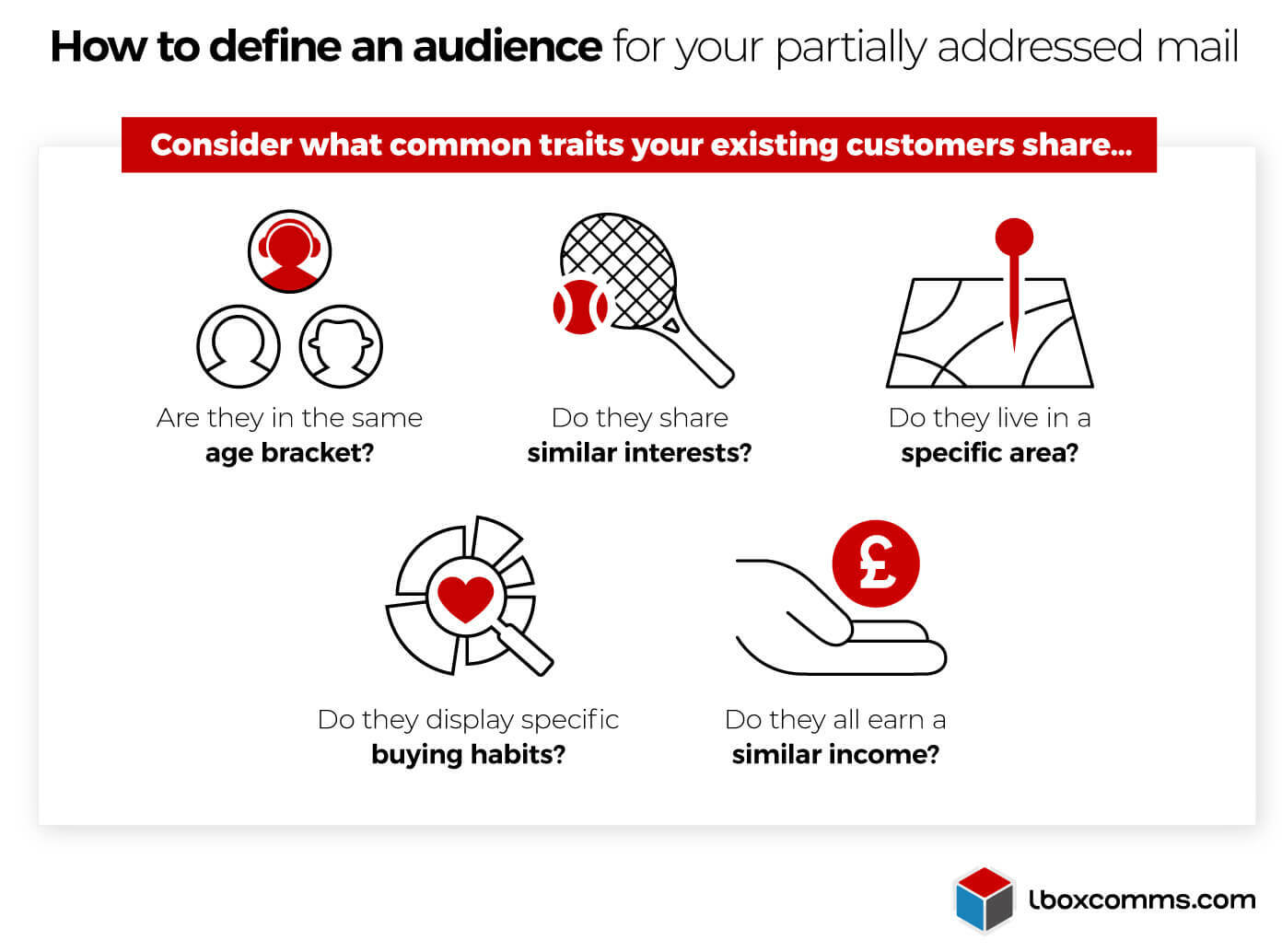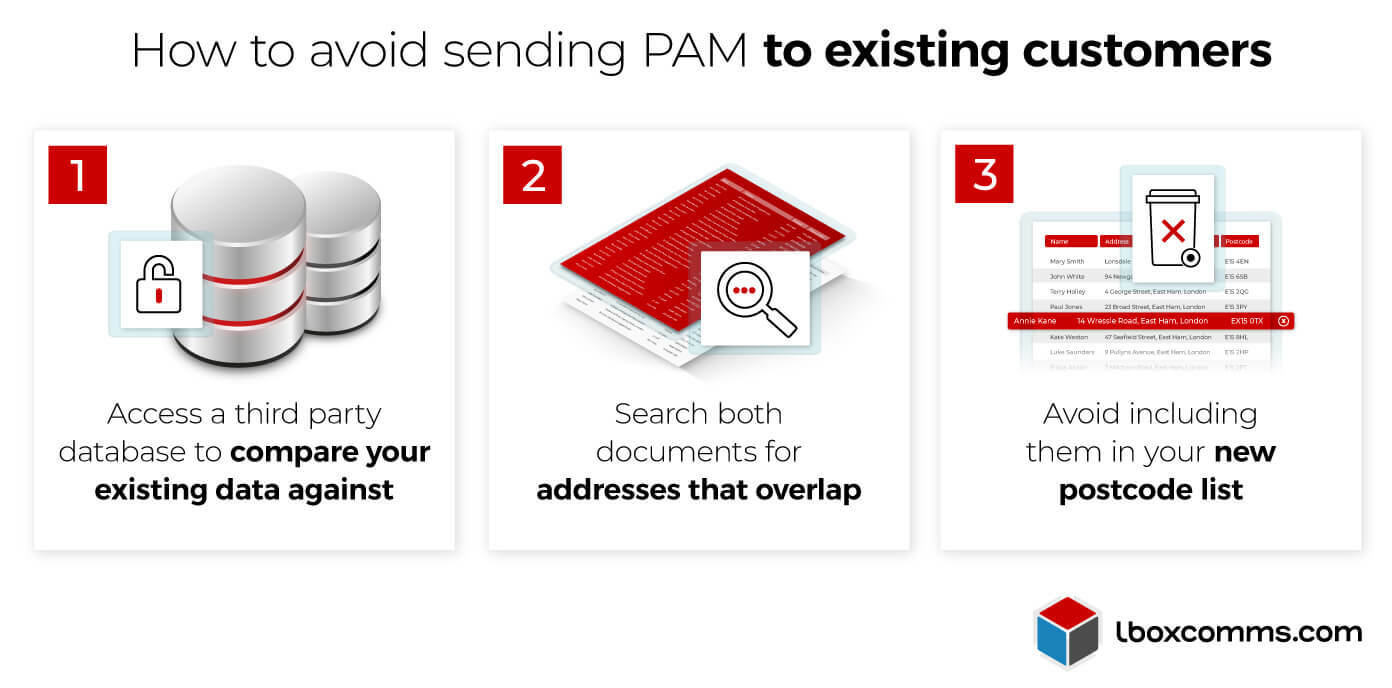
Tangible mail is one of the most powerful ways to reach and engage customers. As well as being opened by 90% of recipients, it’s the channel that generates the greatest return on investment according to 74% of marketers.
Partially addressed mail (PAM) builds on this impressive foundation, giving brands a reliable, cost-effective and data-compliant way to reach households and acquire new customers.
The way it works is simple. Rather than needing the address details of individual households as you would with fully addressed mail, which can be time-consuming or costly to attain, PAM allows you to target clusters of around 15 homes based on their location and demographics.
This is a valuable tool for today's direct mail marketers – but at the heart of its success is a well-developed postcode list. Here, we explore best practices for building a database capable of powering your PAM campaigns, and the importance of a carefully considered approach.
What are postcode lists?
To get your partially addressed campaigns off the ground, you need a postcode list – a database of non-identifiable postcode data for the new customers you intend to reach.
This is a vital first step for any successful partially addressed promotion, as it will define how you identify and target prospects who are likely to buy your products or services.
How do you build the best postcode lists for partially addressed mail?
To ensure you lay a strong foundation for your outreach efforts, a considered strategy to your postcode lists is essential. The last thing you want is to take a scattergun approach that leaves the performance of your campaigns to chance.
Define your target audience to establish a clear direction
The first step when compiling a list of postcodes is to determine who your target audience is.
By understanding the type of prospect you want to target, you can formulate a postcode list that meets your marketing objectives, and increases the odds that your messages connect with your audience.
To begin, look at your existing customers. Analyse what common threads they share, and compile your findings into one or more buyer personas.

Work with a trusted partner to source geo-demographic data
With an audience and buyer persona in mind, your next step is to identify the postcode areas and households that display the traits you’re looking for.
As you’re targeting new customers, you may not be able to search your internal databases for these key details. That’s why it's important to source geo-demographic data from a provider you can trust.
These databases will provide you with a geo-demographic profile for every postcode in the UK, with insights on the interests, income, education, buying habits and more associated with these areas.
This information enables you to identify ideal audience locations, and send highly targeted, relevant direct mail to prospects at a postcode level.
Use a database to avoid mailing existing customers
Partially addressed mail is a powerful acquisition tool for new customers. To keep campaign costs optimal, you’ll want to avoid reaching your existing customers when targeting postcodes they already reside in.
By comparing your customer database with a resource like Royal Mail’s Postcode Address File (PAF) – a collection of more than 1.8 million UK postcodes – you can find and remove existing clients from your postcode list with ease.

Segment your postcode list to allow for personalisation
Personalisation is one of the key reasons why addressed mail is so engaging. Make your PAM promotions just as effective by using this in your next campaign.
To do this, it’s important to segment your postcode list first. There are numerous ways you might choose to do this, such as by interest, age, or income level. This would then allow you to create highly targeted partially addressed mail that:
Addresses households based on their interests, such as ‘Avid Baker’ or ‘Party Animal’
Tailors its calls-to-action to the age of a postcode, such as using QR codes for younger readers and phone numbers for older recipients
Advertises premium items to wealthy households, and more affordable products to lower-income postcodes
The value of a better approach to postcode lists
When you build your post code lists well, you do more than just lay solid groundwork for your partially addressed mail to thrive.

How do postcode lists power partially addressed mail?
Once you have your optimised postcode list, you can then use your data in two main ways – either by ‘topping up’ postcodes or carrying out lookalike targeting.
‘Topping up’ is a process where you identify postcodes already saturated with your customers, and send physical mail to households in this area who aren’t yet buying from you.
Lookalike targeting is a way you can find postcodes with a similar potential to that of your valued customers. This is done by targeting small groups who share desirable traits with your existing audience.
For the best results, consider using both methods. However, if the needs of your campaign favour a particular approach, this can still generate positive results.
Get your partially addressed mail into the letterboxes that matter
As we’ve demonstrated, your postcode lists are key to unlocking the immense potential of PAM. But, building a database requires working with a data broker you trust.
To create mail that lets you target the right customers, we provide professional direct mail data sourcing and management services tailored to you.
By working with trusted partners such as Experian, we source pinpoint data that help you take your promotions to the next level. Thoroughly cleaned and collected in accordance with strict data protection guidelines, Royal Mail and MPS standards, you can rest assured the data we supply is precise, relevant, and completely compliant.
We also understand that getting your campaigns off the ground is a huge task. We offer expertise in this regard, and can guide your mail campaigns through every step of their journey with DM360 Direct Mail, our full turnkey solution delivered to your exact needs.
Optimise the design of your mail for the ideal blend of cost and impact
Print your items to an impeccable standard, on your timeline and budget
Prepare your post with fast, precise machine and hand fulfilment
Send mailings to the right people, at the right price
Your returns and suppressions, expertly managed at the end of every campaign
Don’t leave the performance of your partially addressed mail to chance. Trust us to manage everything in one complete, specialist service. Reach out to our team today and let’s talk.



